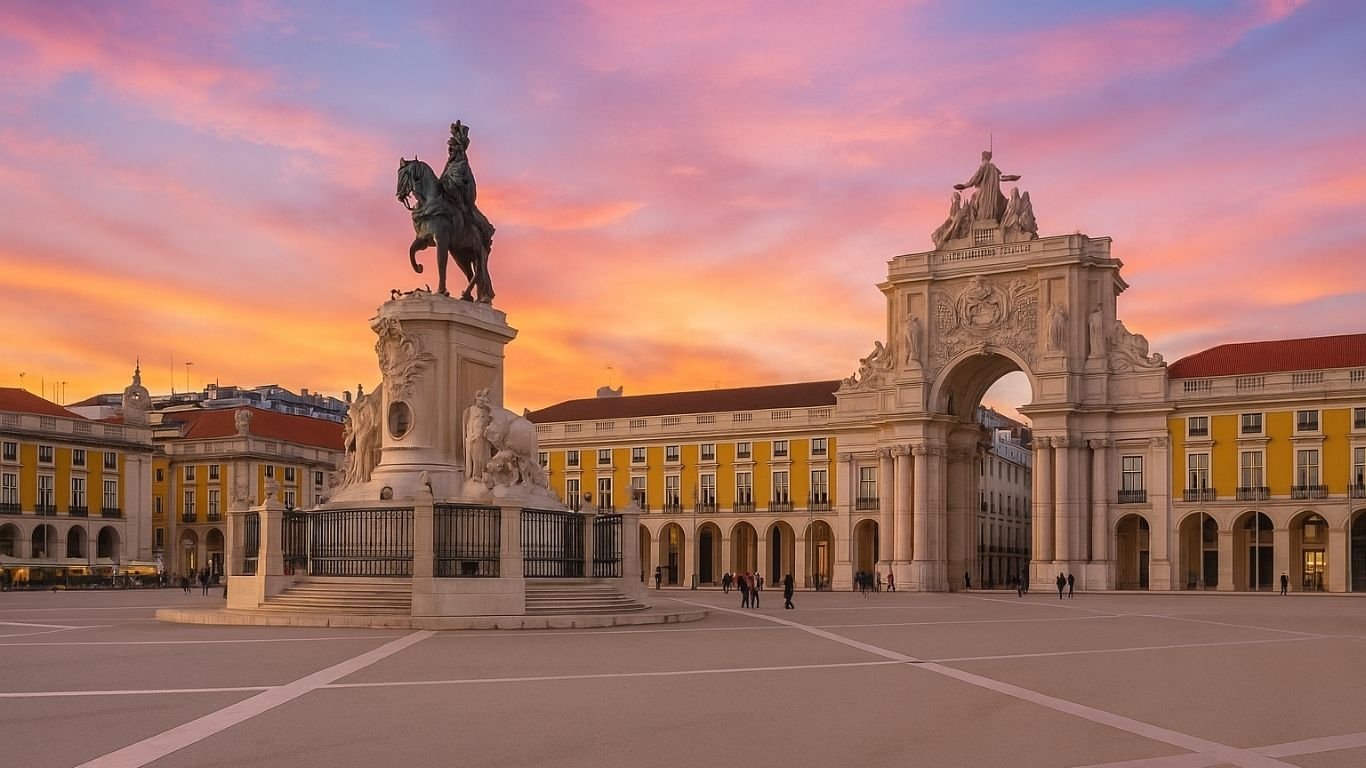From Moorish palaces to modernist cathedrals, flamenco rhythms to Michelin-starred cuisine, Spain is a country that captivates the senses and stirs the soul. But to truly experience its richness, one must go beyond the clichés and dive into the urban heartbeats that define it. That’s where the best cities to visit in Spain come in—each one offering a unique story, flavor, and architectural wonder that reflects a different facet of this vibrant nation.
Whether you’re wandering the surreal streets of Barcelona, soaking in the royal splendor of Madrid, or dancing through the festivals of Seville, the best cities to visit in Spain present a perfect blend of past and present. From coastal escapes to cultural capitals, this curated list explores ten unforgettable destinations—each one promising deep history, visual beauty, culinary mastery, and authentic Spanish charm.
Table of Contents
1. Barcelona
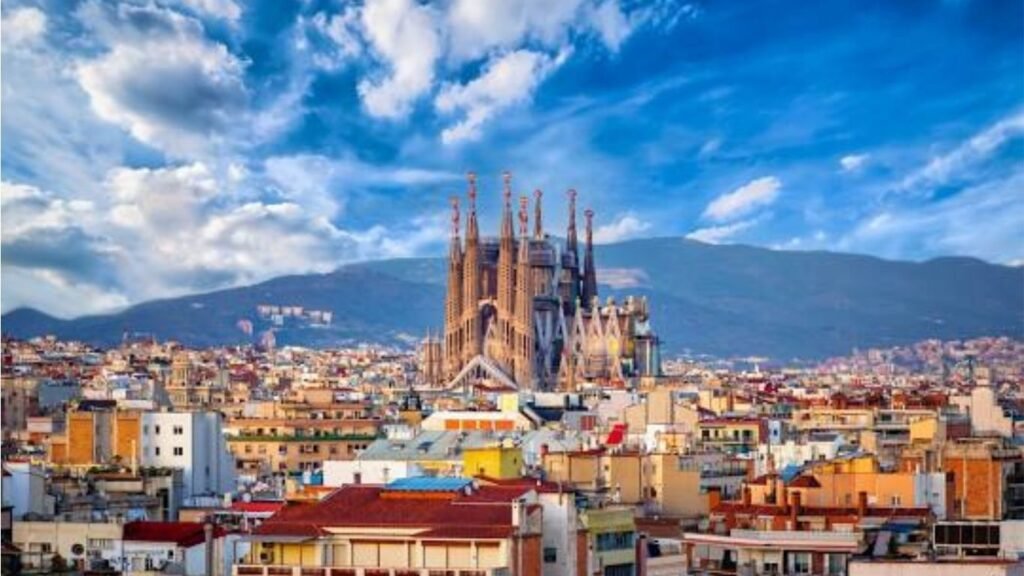
History and Culture
Barcelona is where bold imagination meets timeless tradition. As one of the best cities to visit in Spain, it offers an extraordinary cultural experience shaped by Roman roots, Gothic legacies, and Catalan modernism. The city has always marched to the beat of its own drum—visibly proud of its Catalan identity and language, yet globally connected through design, cuisine, and creativity.
Home to Antoni Gaudí’s architectural wonders and the historic Gothic Quarter, Barcelona’s streets are living galleries. From the medieval grandeur of the Cathedral to the playful surrealism of Park Güell, the city invites exploration at every turn. Flamenco fuses with Catalan rumba, Roman walls shadow digital art museums, and traditional markets thrive beside avant-garde cuisine. Barcelona captures the spirit of contrast, innovation, and elegance—hallmarks of the best cities to visit in Spain.
Must-See Attractions
- Sagrada Família: Gaudí’s ever-evolving masterpiece is the crown jewel of Barcelona’s skyline—equal parts dreamscape and devotion.
- Park Güell: A colorful mosaic park with organic shapes and panoramic city views, reflecting Gaudí’s wild genius.
- Gothic Quarter: Wander through narrow medieval alleys filled with Roman ruins, tapas bars, and centuries-old churches.
- Casa Batlló & La Pedrera: Architectural icons along Passeig de Gràcia that bring to life Gaudí’s unique aesthetic.
- Montjuïc Castle & Magic Fountain: Ride the cable car to an old fortress and enjoy night shows of light, water, and music.
- Barceloneta Beach: A lively urban beach perfect for swimming, sunbathing, or sipping sangria by the sea.
- Camp Nou: The legendary home of FC Barcelona and one of the most visited football stadiums in the world.
- Picasso Museum: Dive into the early works and evolution of one of Spain’s most celebrated artists.
- La Rambla & Boqueria Market: A central promenade lined with performers and a buzzing food market offering local delights.
- Bunkers del Carmel: A hidden viewpoint offering unforgettable sunsets over the entire cityscape.
Unique Experiences
| Experience Type | Description |
|---|---|
| Gaudí Trail | Follow Gaudí’s visionary works from the Sagrada Família to hidden corners like Casa Vicens. |
| Catalan Cuisine Tour | Taste signature dishes like escalivada, fideuà, and crema catalana in historic neighborhoods. |
| Rooftop Bars & Views | Enjoy cocktails and sunsets from stylish rooftops in El Born and Eixample. |
| Festivals like La Mercè | Join Barcelona’s biggest festival filled with parades, fireworks, and cultural showcases. |
Best Time to Visit & Transportation
Spring (April–June) and early fall (September–October) are ideal for visiting Barcelona, offering warm weather and vibrant street life. Summer is festive but crowded, while winter is quieter and perfect for museums and food tours.
Barcelona’s metro and bus systems are efficient and user-friendly. Walking is ideal for central districts, and bike lanes abound. High-speed trains link the city with Madrid, Zaragoza, and Valencia, while El Prat Airport offers excellent international access. Exploring this Mediterranean gem is easy—and endlessly rewarding—making it one of the best cities to visit in Spain.
2. Madrid
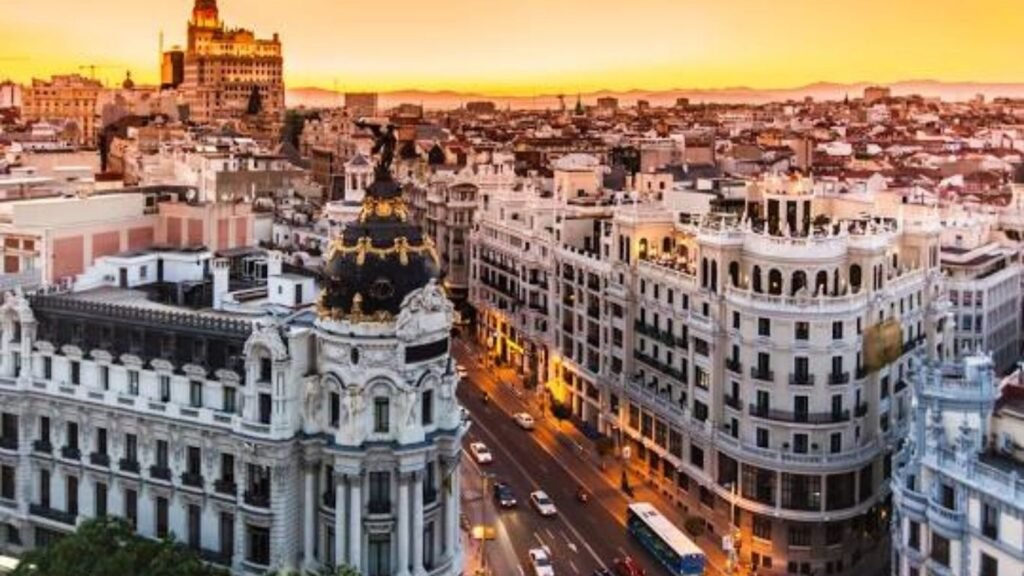
History and Culture
Madrid is a city where royal splendor, cutting-edge art, and a love for life come together in perfect harmony. As the capital of Spain, it stands proudly among the best cities to visit in Spain, offering a dynamic blend of historical depth and contemporary flair. From its founding as a Moorish fortress to its rise under the Habsburg and Bourbon dynasties, Madrid’s story is etched into its elegant plazas and majestic boulevards.
Cultural icons like the Prado Museum and the Royal Palace showcase Spain’s artistic and regal heritage, while neighborhoods like Malasaña and Lavapiés pulse with modern energy, street art, and innovation. Madrid’s café culture, world-class gastronomy, and late-night rhythms are legendary. It’s a place where tradition meets transformation, making it one of the best cities to visit in Spain for any curious traveler.
Must-See Attractions
- Royal Palace of Madrid: A grand residence filled with opulent halls, royal armor, and lush courtyards.
- The Prado Museum: Home to masterpieces by Velázquez, Goya, and Titian—one of the world’s top art museums.
- Retiro Park: A tranquil escape with a lake, glass palace, rose gardens, and shaded promenades.
- Gran Vía: Madrid’s most iconic avenue, lined with theaters, shopping, and stunning architecture.
- Plaza Mayor: A historic square framed by arcaded buildings and alive with terraces, artists, and local life.
- Temple of Debod: An authentic Egyptian temple offering breathtaking sunset views over the city.
- Santiago Bernabéu Stadium: A must-visit for football fans and home to Real Madrid’s celebrated legacy.
- Mercado de San Miguel: A vibrant food market offering gourmet tapas, Iberian ham, seafood, and Spanish wines.
- Museo Reina Sofía: Spain’s national museum of modern art, home to Picasso’s powerful Guernica.
- Cibeles Fountain & Palace: A symbol of Madrid’s civic pride and beauty, often illuminated during celebrations.
Unique Experiences
| Experience Type | Description |
|---|---|
| Literary Quarter Walks | Stroll past cafés and statues where Spain’s Golden Age writers once lived and worked. |
| Tapas and Vermouth Routes | Discover local favorites in traditional taverns, especially around La Latina and Chueca. |
| Flamenco in Tablaos | Watch authentic flamenco performances in intimate venues like Corral de la Morería. |
| Nightlife in Malasaña | Experience Madrid’s bohemian side with live music, cocktails, and stylish bars. |
Best Time to Visit & Transportation
Madrid is best enjoyed in spring (April–June) and fall (September–October) when sunny days and mild temperatures make walking through its grand boulevards and leafy parks a delight. Summer is vibrant but hot, while winter offers festive charm and fewer crowds.
The city has an excellent metro system and extensive bus lines, making it easy to navigate. High-speed AVE trains connect Madrid with Barcelona, Seville, Valencia, and beyond. With two main train stations and the international Adolfo Suárez Madrid–Barajas Airport, reaching other parts of Spain from its capital is seamless—yet another reason it’s among the best cities to visit in Spain.
3. Seville
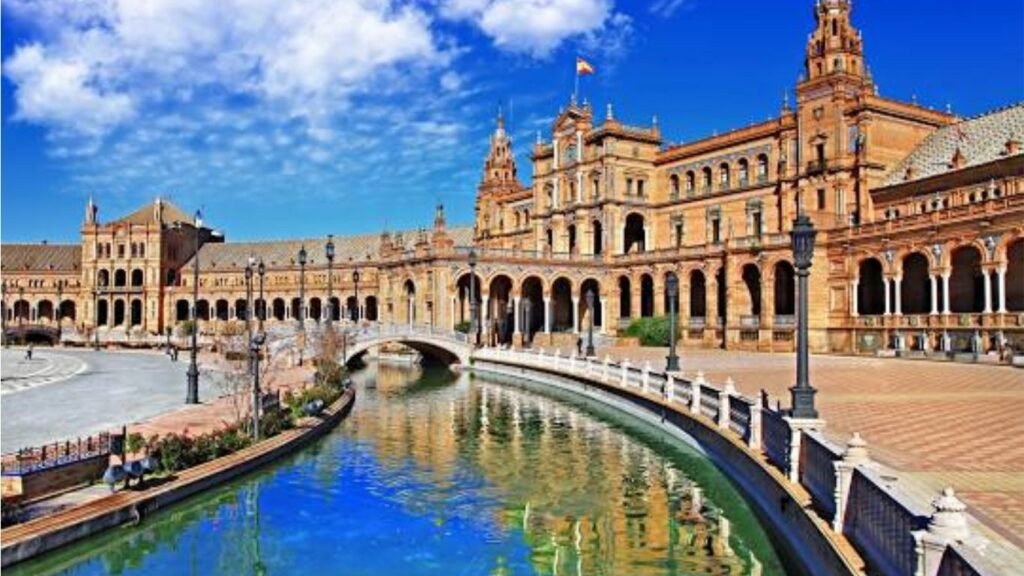
History and Culture
Seville is where passion burns brightly—in its flamenco, festivals, and centuries-old traditions. As one of the best cities to visit in Spain, this Andalusian capital enchants with its Moorish palaces, baroque churches, and vibrant streets draped in orange blossoms. Once a key port of the Spanish Empire, Seville thrived during the Age of Discovery, and its wealth of architectural and cultural treasures remains unmatched.
The legacy of Muslim, Christian, and Jewish communities is woven into the city’s soul. In neighborhoods like Santa Cruz, narrow alleys reveal hidden patios and tiled courtyards that echo with stories of the past. From holy processions during Semana Santa to the wild joy of Feria de Abril, Seville lives and breathes its history. For travelers seeking authenticity and elegance, it remains one of the best cities to visit in Spain.
Must-See Attractions
- Royal Alcázar of Seville: A stunning palace complex blending Islamic, Gothic, and Renaissance styles, with serene gardens and tiled halls.
- Seville Cathedral & La Giralda: One of the largest Gothic cathedrals in the world, with a towering former minaret offering panoramic views.
- Plaza de España: An architectural masterpiece of bridges, canals, and mosaic alcoves representing Spain’s provinces.
- Barrio Santa Cruz: The former Jewish quarter, filled with charming courtyards, whitewashed houses, and romantic corners.
- Metropol Parasol (Las Setas): A massive wooden structure offering modern contrast and 360° views over the old city.
- Triana District: A lively neighborhood across the Guadalquivir River, famed for flamenco, ceramics, and authentic tapas bars.
- Archivo de Indias: A UNESCO World Heritage site that houses documents from the Spanish Empire’s colonial era.
- Casa de Pilatos: A hidden gem of Renaissance-Mudejar architecture, blending Roman, Gothic, and Moorish influences.
- Torre del Oro: A 13th-century watchtower once guarding the river, now home to a naval museum.
- Parque de María Luisa: A lush escape near Plaza de España, ideal for horse-drawn carriage rides or peaceful walks.
Unique Experiences
| Experience Type | Description |
|---|---|
| Flamenco in its birthplace | See authentic shows in traditional tablaos where the art form was born. |
| Tapas in Triana | Explore local bars for specialties like salmorejo, jamón, and pescaíto frito. |
| Horse Carriage Rides | Tour the city’s historic center with a touch of old-world charm. |
| Festival Immersion | Join locals during Feria de Abril or Semana Santa, when the city erupts in color and tradition. |
Best Time to Visit & Transportation
Spring is the most magical time to visit Seville—April especially, when the Feria de Abril fills the city with flamenco, parades, and celebration. Autumn (September to November) is also ideal for pleasant weather. Summers can be intensely hot, often exceeding 40°C, so they’re best avoided for long sightseeing days.
Seville’s compact historic center is best explored on foot or by bike. The city also offers a reliable tram and bus network, with high-speed AVE trains connecting it to Madrid, Córdoba, and Málaga. With its rich traditions and undeniable beauty, Seville continues to be one of the best cities to visit in Spain.
4. Valencia
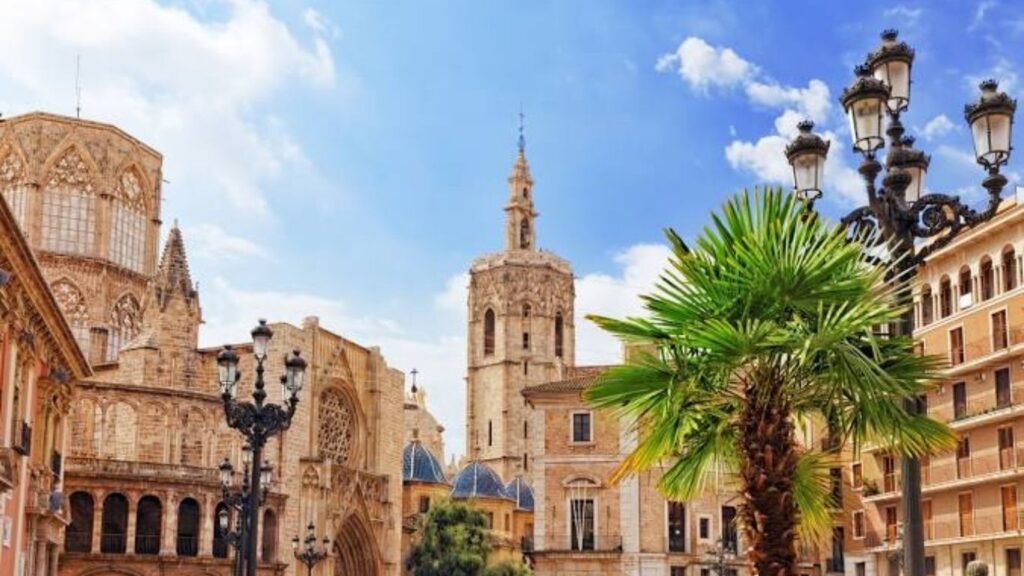
History and Culture
Valencia is a city where innovation and heritage blend seamlessly under the Mediterranean sun. As one of the best cities to visit in Spain, it offers a unique balance of old-world charm and futuristic ambition. Founded as a Roman colony and later ruled by Moors, Valencia’s past is carved into its city walls, while its present shines through in sleek modernist architecture and a booming cultural scene.
The historic center brims with Gothic churches and bustling plazas, while the city’s modern side glows through the architectural marvels of the City of Arts and Sciences. Beyond its buildings, Valencia pulses with festive spirit—nowhere more evident than during Las Fallas, a fiery spring celebration of satire and spectacle. With golden beaches, a vibrant culinary scene, and deep-rooted traditions, Valencia truly deserves its place among the best cities to visit in Spain.
Must-See Attractions
- City of Arts and Sciences: A futuristic complex housing a planetarium, science museum, opera house, and Europe’s largest aquarium.
- Valencia Cathedral & El Miguelete: A historic cathedral that blends Romanesque, Gothic, and Baroque styles—rumored to house the Holy Grail.
- La Lonja de la Seda: A UNESCO World Heritage site, this 15th-century silk exchange reflects Valencia’s mercantile past.
- Central Market (Mercado Central): One of Europe’s oldest and most beautiful markets, offering local produce, meats, and seafood.
- Turia Gardens: Once a river, now a lush park winding through the city with paths, fountains, and playgrounds.
- Barrio del Carmen: A bohemian quarter full of art studios, street murals, tapas bars, and medieval architecture.
- Oceanogràfic: A world-class marine park featuring underwater tunnels and marine life from every ocean on the planet.
- Malvarrosa Beach: A spacious, golden beach ideal for swimming, volleyball, or enjoying fresh paella by the sea.
- Torres de Serranos: Ancient watchtowers that once guarded the city, now offering stunning views over the rooftops.
- Fallas Museum: A tribute to Valencia’s fiery festival, preserving giant papier-mâché figures saved from the flames.
Unique Experiences
| Experience Type | Description |
|---|---|
| Paella at the Source | Enjoy authentic paella where it originated, especially around Albufera Natural Park. |
| Fallas Festival | Visit in March to witness giant sculptures, fireworks, and parades in one of Spain’s most iconic festivals. |
| Riverbed Bike Tours | Cycle the lush Turia Gardens from park to museum through the heart of the city. |
| Rooftop Dining | Dine with a view at stylish rooftop bars overlooking historic domes and church towers. |
Best Time to Visit & Transportation
The best times to explore Valencia are spring and autumn, especially March for the Fallas festival or May to June for beach weather without summer crowds. Summers are hot and lively, while winters remain mild and relaxed.
Valencia is easily navigable by foot, bicycle, or metro. The city has a well-connected tram and bus system, and the high-speed AVE train links it with Madrid and Barcelona. Its international airport provides direct flights to many European hubs. A perfect mix of tradition and innovation, Valencia continues to stand out among the best cities to visit in Spain.
5. Granada

History and Culture
Granada is a city of poetic contrasts—where Islamic palaces overlook Christian cathedrals, and snow-capped peaks rise beyond palm-lined streets. Nestled at the foot of the Sierra Nevada mountains, it’s one of the best cities to visit in Spain for those seeking a profound encounter with the country’s Moorish past and Andalusian soul.
The last stronghold of Al-Andalus, Granada flourished under Nasrid rule, leaving behind a legacy of intricate architecture, music, and scholarship. Even today, the city whispers stories of emirs and poets through its winding Albaicín alleys and tile-covered patios. Beyond its palaces and gardens, Granada is a city of students, flamenco, and free tapas, where old traditions thrive alongside youthful vibrance. For history lovers, culture seekers, and romantic wanderers alike, it remains one of the best cities to visit in Spain.
Must-See Attractions
- Alhambra Palace: A masterpiece of Moorish architecture, this sprawling hilltop complex of palaces, towers, and gardens is a UNESCO World Heritage site.
- Generalife Gardens: Once the Nasrid rulers’ summer retreat, these gardens offer tranquil fountains, flowerbeds, and panoramic views.
- Albaicín Quarter: A maze of whitewashed houses and cobblestone streets, echoing Granada’s Islamic heritage.
- Granada Cathedral: A Renaissance marvel built atop a former mosque, showcasing Spain’s transition from Islamic to Christian rule.
- Royal Chapel of Granada: The burial place of Catholic Monarchs Ferdinand and Isabella, steeped in history and splendor.
- Mirador de San Nicolás: A famous viewpoint offering breathtaking sunsets over the Alhambra and Sierra Nevada.
- Sacromonte Caves: Historic cave homes where flamenco was born—now home to tablaos and small museums.
- Carrera del Darro: A picturesque riverside promenade lined with stone bridges, artisan shops, and charming cafés.
- Bañuelo Arab Baths: One of Spain’s oldest and best-preserved hammams, offering a glimpse into daily life under Muslim rule.
- Science Park Museum: A family-friendly attraction with hands-on exhibits, planetarium shows, and lush gardens.
Unique Experiences
| Experience Type | Description |
|---|---|
| Free Tapas Culture | In Granada, every drink comes with a complimentary tapa—try it at traditional tascas. |
| Flamenco in Sacromonte | Watch passionate performances in intimate cave venues where the art form was born. |
| Sunset at the Alhambra | View the red walls glow against the mountains from the Albaicín’s scenic miradors. |
| Moroccan Tea Houses | Experience Andalusia’s Moorish legacy with mint tea and sweets in richly decorated teterías. |
Best Time to Visit & Transportation
The best time to visit Granada is in spring (April to June) and autumn (September to November), when the weather is pleasant and the gardens of the Alhambra are in full bloom. Summer can be quite hot, while winter brings a chance to ski in the nearby Sierra Nevada.
Granada is walkable, especially around the historic center. Local buses and minibuses serve the steeper hills and suburbs. While it doesn’t have AVE high-speed rail yet, it’s well-connected by regional trains and buses to cities like Seville, Málaga, and Madrid. With its rich heritage and scenic beauty, Granada easily claims its place among the best cities to visit in Spain.
6. Bilbao

History and Culture
Bilbao is the Basque Country’s bold declaration to the world—a city where industrial grit has transformed into architectural grace, and tradition dances with modernism. Once known primarily for shipbuilding and steel, it has reinvented itself into one of the best cities to visit in Spain, celebrated for its art, cuisine, and cultural innovation.
Rooted in Basque identity and language, Bilbao honors its heritage through traditions like bertsolaritza (oral poetry), txikiteo (bar hopping), and its own form of pelota. But this is also a city that looks forward—with the Guggenheim Museum as its shimmering symbol of urban rebirth. With a walkable center, riverside promenades, and access to nearby green hills and coastal villages, Bilbao offers a rare mix of cosmopolitan energy and local soul, securing its place among the best cities to visit in Spain.
Must-See Attractions
- Guggenheim Museum: A titanium-clad icon of contemporary architecture housing rotating exhibitions of modern art.
- Casco Viejo (Old Town): A lively historic district with narrow streets, pintxo bars, traditional shops, and local markets.
- Bilbao Fine Arts Museum: An impressive collection ranging from medieval religious art to 20th-century masters like El Greco and Goya.
- Santiago Cathedral: A beautiful Gothic cathedral located at the heart of the city’s pilgrimage history.
- Zubizuri Bridge: A sleek white pedestrian bridge by Santiago Calatrava spanning the Nervión River.
- Plaza Nueva: A neoclassical square popular for outdoor pintxo tastings and Sunday book markets.
- Azkuna Zentroa (Alhóndiga): A multi-purpose cultural center with libraries, cinemas, exhibitions, and a rooftop pool with a glass floor.
- Funicular de Artxanda: A scenic ride to a panoramic viewpoint overlooking the entire city and its surrounding mountains.
- La Ribera Market: One of Europe’s largest covered markets, offering a feast of Basque flavors under a glass and iron roof.
- Deusto University: A historic institution with a beautiful riverside campus that adds academic charm to the cityscape.
Unique Experiences
| Experience Type | Description |
|---|---|
| Pintxo Hopping in Casco Viejo | Sample small bites paired with local txakoli wine across bustling taverns. |
| Art Walks Along the River | Discover outdoor sculptures and avant-garde installations between bridges. |
| Basque Culinary Class | Learn to cook regional specialties like bacalao al pil-pil or marmitako. |
| Day Trip to Getxo | Escape to the seaside for historic mansions, beaches, and the Vizcaya Bridge. |
Best Time to Visit & Transportation
The best times to explore Bilbao are late spring (May–June) and early autumn (September–October), when the weather is mild and cultural events like the Aste Nagusia festival are in full swing. Winters are wet but manageable, while summers are comfortable and greener than most of Spain.
Bilbao’s metro, buses, and trams are efficient and designed by famed architect Norman Foster. The city is also connected by regional trains and buses to San Sebastián, Vitoria, and Burgos. Bilbao Airport offers flights to major Spanish and European cities. With its deep sense of place and daring spirit, Bilbao is undoubtedly one of the best cities to visit in Spain.
7. Málaga
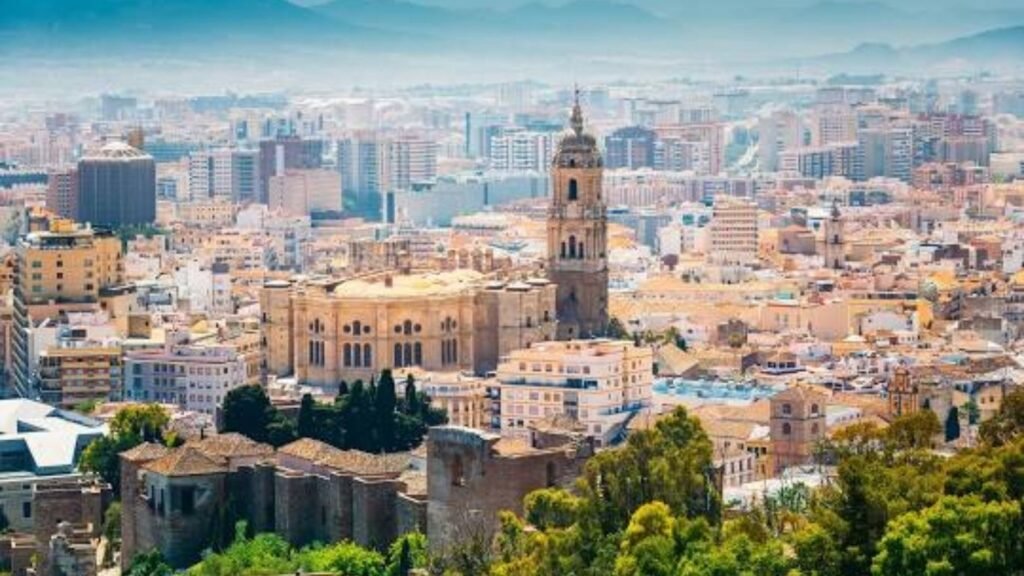
History and Culture
Málaga is a sun-drenched city where ancient history meets contemporary culture on the shores of the Mediterranean. Known as the gateway to the Costa del Sol, it has evolved from a sleepy port into one of the best cities to visit in Spain, thanks to its blend of Moorish architecture, modern art, and seaside charm.
Founded by the Phoenicians and later shaped by Romans and Moors, Málaga’s layered past is still visible in its fortress walls, amphitheater, and winding old town. But it’s also the birthplace of Pablo Picasso, and the city proudly celebrates its artistic legacy with galleries, festivals, and a flourishing creative scene. With palm-lined promenades, inviting beaches, and a growing reputation for gastronomy, Málaga continues to shine as one of the best cities to visit in Spain.
Must-See Attractions
- Alcazaba of Málaga: A well-preserved Moorish fortress offering sweeping views of the port and lush inner courtyards.
- Gibralfaro Castle: Connected to the Alcazaba, this hilltop fortress provides panoramic vistas of the city and coastline.
- Roman Theatre: Located at the foot of the Alcazaba, it offers a fascinating glimpse into Málaga’s Roman roots.
- Picasso Museum Málaga: Housed in a Renaissance palace, this museum honors the city’s most famous son with over 200 works.
- Málaga Cathedral: Nicknamed “La Manquita” (The One-Armed Lady), this grand cathedral remains unfinished yet awe-inspiring.
- Pompidou Centre Málaga: A striking cube of color by the harbor showcasing contemporary international art.
- Calle Larios: The city’s main shopping street, framed by elegant 19th-century architecture and buzzing with energy.
- Atarazanas Market: A vibrant food market offering Andalusian produce, tapas bars, and local flavor under a Moorish arch.
- La Malagueta Beach: Just steps from the city center, this sandy beach is perfect for a refreshing dip or leisurely stroll.
- Muelle Uno: A modern waterfront complex filled with restaurants, shops, and sunset views over the yachts.
Unique Experiences
| Experience Type | Description |
|---|---|
| Sunset from Gibralfaro | Hike or take a bus up the hill for golden-hour views over the harbor and bullring. |
| Tapas by the Sea | Enjoy local seafood specialties like espetos (grilled sardines) on beachfront chiringuitos. |
| Flamenco in El Perchel | Watch passionate, intimate performances in traditional Andalusian settings. |
| Art Walk in Soho District | Explore street murals and creative spaces in Málaga’s emerging arts neighborhood. |
Best Time to Visit & Transportation
Málaga enjoys over 300 days of sunshine a year, making it a great destination year-round. Spring (April to June) and autumn (September to November) offer perfect weather for sightseeing and beach time. Summers are hot and festive, while winters are mild and ideal for museum hopping and relaxed coastal strolls.
The city’s metro, buses, and suburban trains make it easy to get around. Málaga’s train station connects you quickly to Seville, Córdoba, and Madrid via high-speed AVE lines. Málaga-Costa del Sol Airport is a major international hub. With its historic charm and coastal appeal, Málaga firmly belongs among the best cities to visit in Spain.
8. Córdoba

History and Culture
Córdoba is a timeless gem where Islamic, Christian, and Jewish influences coexist in architectural harmony. Once the capital of the Umayyad Caliphate and one of the most enlightened cities of medieval Europe, it is undeniably one of the best cities to visit in Spain for history lovers and cultural explorers alike.
The city’s narrow streets, flower-laden patios, and centuries-old landmarks preserve the legacy of a golden age of coexistence and scholarship. Córdoba was once home to philosophers, poets, and scientists whose ideas shaped the world. Today, that brilliance still echoes in its cobblestones and courtyards. With a compact old town that’s a UNESCO World Heritage site and one of the most breathtaking religious structures in Europe, Córdoba stands proud as one of the best cities to visit in Spain.
Must-See Attractions
- Mosque–Cathedral of Córdoba (Mezquita): A stunning fusion of Islamic and Christian architecture, with rows of red-and-white arches and a Renaissance cathedral rising at its center.
- Alcázar of the Christian Monarchs: A fortified palace with Roman mosaics, Moorish patios, and spectacular gardens.
- Jewish Quarter (Judería): A labyrinth of whitewashed streets and hidden squares, home to ancient synagogues and cultural heritage.
- Roman Bridge & Calahorra Tower: A scenic stone bridge spanning the Guadalquivir River, with a medieval tower-turned-museum at one end.
- Patios of Córdoba: Discover the city’s most iconic tradition by visiting beautifully adorned private patios, especially during the May festival.
- Palacio de Viana: A 14-patio mansion offering a deep dive into aristocratic life and garden artistry in Córdoba.
- Plaza de la Corredera: A grand 17th-century square where locals gather for tapas and markets.
- Medina Azahara: The ruins of a lavish 10th-century Islamic city just outside Córdoba, revealing the splendor of the caliphate.
- Torre de la Calahorra Museum: An immersive experience exploring religious tolerance and intercultural dialogue through Córdoba’s history.
- Calleja de las Flores: A postcard-perfect alleyway with framed flower pots and a stunning view of the Mezquita tower.
Unique Experiences
| Experience Type | Description |
|---|---|
| Patio Festival in May | Visit during the Fiesta de los Patios, when locals open their floral courtyards to the public. |
| Andalusian Horse Show | Watch traditional equestrian performances in the Royal Stables. |
| Flamenco in Historic Taverns | Enjoy authentic shows in intimate settings like Tablao El Cardenal. |
| Scent Trails in Judería | Follow your nose through orange blossoms, jasmine, and spices in the old quarter. |
Best Time to Visit & Transportation
The best times to explore Córdoba are spring and autumn. May is particularly special, thanks to the Patio Festival and warm weather. Summers can be extremely hot, often reaching over 40°C, while winters are mild and less crowded.
Córdoba is very walkable, especially in the old town. Local buses and taxis serve the city well, and the AVE high-speed train links Córdoba with Madrid, Seville, and Málaga in under two hours. Rich in layers and light, Córdoba is one of the best cities to visit in Spain for an unforgettable blend of beauty and history.
9. San Sebastián

History and Culture
San Sebastián, or Donostia in Basque, is a seaside city where sophistication meets natural beauty. Tucked into the Bay of Biscay and surrounded by green hills, it’s one of the best cities to visit in Spain for food lovers, surfers, and anyone seeking culture with a coastal breeze.
Originally a fishing village, San Sebastián rose to prominence as a royal summer retreat in the 19th century. Today, it blends Belle Époque elegance with Basque authenticity. The city’s cultural life thrives year-round, from jazz festivals and film premieres to pintxo routes and traditional tamborradas. Whether you’re admiring the sunset from Monte Urgull or savoring the world’s best bite-sized cuisine, San Sebastián offers an experience unlike any other—firmly establishing itself as one of the best cities to visit in Spain.
Must-See Attractions
- La Concha Beach: A pristine crescent of golden sand framed by green hills and classic seaside promenade.
- Old Town (Parte Vieja): A vibrant historic quarter filled with pintxo bars, plazas, and centuries-old churches.
- Monte Urgull: A wooded hill offering panoramic views, a historic castle, and the iconic Sacred Heart statue.
- San Telmo Museum: A cutting-edge museum dedicated to Basque society, art, and identity, set in a 16th-century convent.
- Peine del Viento (Comb of the Wind): A dramatic sculpture by Eduardo Chillida where iron meets crashing waves.
- Buen Pastor Cathedral: San Sebastián’s neo-Gothic cathedral, towering above the elegant streets of the city center.
- Monte Igueldo Funicular: A vintage funicular leading to an amusement park and one of the best views in Spain.
- Miramar Palace: A former royal summer residence with lovely gardens overlooking La Concha Bay.
- Aquarium & Port: Explore the marine life of the Bay of Biscay and enjoy a seafood lunch in the bustling harbor.
- Zurriola Beach: A haven for surfers and younger crowds, located near the artsy Gros neighborhood.
Unique Experiences
| Experience Type | Description |
|---|---|
| Pintxo Crawl in Parte Vieja | Sample Basque tapas like anchovies, foie gras, and txangurro (spider crab) in dozens of lively bars. |
| Scenic Coastal Hikes | Walk from the city to nearby fishing villages like Pasaia along the dramatic coastline. |
| Michelin-Star Dining | Indulge in world-class cuisine—San Sebastián boasts one of the highest Michelin-star concentrations globally. |
| Basque Festivals | Experience local pride through traditional dances, music, and tamborradas during annual fiestas. |
Best Time to Visit & Transportation
San Sebastián is best visited from late spring to early autumn (May–September), when beach days and festivals are in full swing. July and August are lively but also the busiest. The shoulder months offer a great balance of good weather and fewer crowds.
The city is compact and very walkable, with most attractions within 15–20 minutes on foot. Local buses and taxis are also convenient, and San Sebastián is accessible by train or bus from Bilbao, Pamplona, and other northern cities. With its unrivaled cuisine, natural beauty, and cultural richness, San Sebastián undoubtedly ranks among the best cities to visit in Spain.
10. Zaragoza
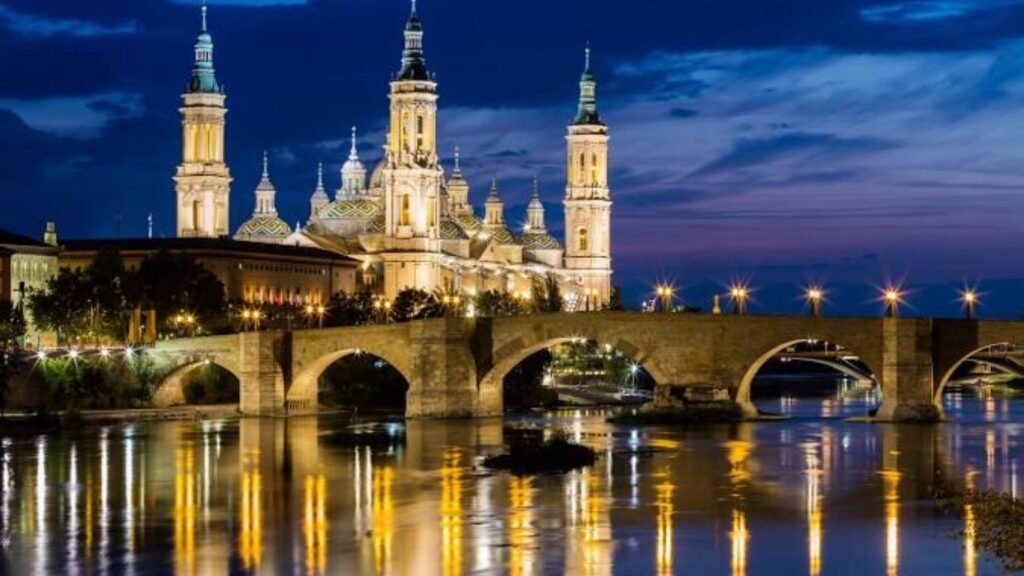
History and Culture
Zaragoza is Spain’s hidden gem—bold, historical, and refreshingly authentic. Straddling the Ebro River between Madrid and Barcelona, this Aragonese capital is one of the best cities to visit in Spain for travelers seeking rich heritage without the crowds. Its story is etched into Roman ruins, Islamic palaces, Gothic cathedrals, and avant-garde bridges, making it a living showcase of Spain’s layered past.
Founded over 2,000 years ago as Caesaraugusta, the city has flourished under Roman, Moorish, Jewish, and Christian rule. From the grandeur of the Basilica del Pilar to the vibrancy of local tapas culture, Zaragoza blends elegance with energy. Its thriving university, contemporary art scene, and lively squares offer visitors a taste of Spain that’s both historic and cutting-edge—securing its spot among the best cities to visit in Spain.
Must-See Attractions
- Basilica del Pilar: A monumental baroque cathedral rising above the Ebro River, with sacred relics, cupola frescoes, and riverfront beauty.
- Aljafería Palace: A magnificent 11th-century Islamic fortress later transformed into a Christian royal residence—one of Spain’s Moorish architectural highlights.
- La Seo Cathedral: A UNESCO-listed Gothic cathedral with intricate Mudejar decoration, located right beside the Basilica.
- Puente de Piedra (Stone Bridge): A historic bridge offering panoramic views of Zaragoza’s skyline and religious landmarks.
- Roman Theater Museum: Remains of a 6,000-seat Roman amphitheater, with exhibits detailing Zaragoza’s ancient Roman roots.
- Plaza del Pilar: One of Europe’s largest squares, flanked by majestic buildings, fountains, and lively events throughout the year.
- Caesaraugusta Route: A network of museums and archaeological sites dedicated to the city’s Roman foundations—forum, baths, port, and theater.
- Expo 2008 Grounds & Water Tower: A modern riverside area showcasing contemporary architecture and open-air art from Zaragoza’s Expo era.
- Goya Museum: Dedicated to the famous painter born nearby, this museum features over 1,000 works and explores his creative legacy.
- El Tubo District: A lively maze of narrow streets filled with tapas bars offering local specialties like ternasco and jamón de Teruel.
Unique Experiences
| Experience Type | Description |
|---|---|
| Mudejar Architecture Walks | Discover the unique blend of Islamic and Gothic styles that define Zaragoza’s religious buildings. |
| Ebro River Kayaking | Paddle along the city’s scenic riverfront with views of domes, towers, and bridges. |
| Tapas in El Tubo | Indulge in Aragón’s signature bites paired with local wine or vermouth in bustling bars. |
| Fiestas del Pilar | Visit in October to experience Zaragoza’s biggest festival with parades, music, and floral offerings. |
Best Time to Visit & Transportation
Spring and autumn are ideal times to explore Zaragoza, especially April–June and September–October, when temperatures are mild and the city is alive with cultural events. The Fiestas del Pilar in October is a particularly vibrant time to visit. Summers are hot and dry, while winters are crisp and quieter.
Zaragoza is extremely well connected—served by AVE high-speed trains from Madrid, Barcelona, and Valencia, with most journeys taking under two hours. The city has a reliable tram and bus system, and its compact center makes walking easy. With its unique mix of cultures and monumental architecture, Zaragoza closes the list of the best cities to visit in Spain with strength and style.
FAQ: Best Cities to Visit in Spain
What are the best cities to visit in Spain for first-time travelers?
Barcelona, Madrid, and Seville are ideal for first-time visitors. They offer a balance of historical landmarks, cultural experiences, great food, and easy transportation, making them some of the best cities to visit in Spain for newcomers.
Which cities in Spain are known for architecture?
Barcelona is famous for Gaudí’s surreal modernism, Córdoba for Islamic-Spanish fusion, and Zaragoza for its Mudejar masterpieces. Each of these stands out among the best cities to visit in Spain for architecture lovers.
Are the best cities to visit in Spain suitable for budget travel?
Yes. Cities like Granada, Valencia, and Málaga offer excellent value with affordable accommodations, free tapas, and accessible public transport—making them some of the best cities to visit in Spain on a budget.
Which cities are best for foodies in Spain?
San Sebastián is a global culinary capital, while Madrid and Bilbao offer rich tapas traditions. Valencia is the birthplace of paella. These gastronomic powerhouses are definitely among the best cities to visit in Spain for food lovers.
When is the best time to visit cities in Spain?
Spring (April to June) and autumn (September to November) are ideal for visiting most Spanish cities, offering mild weather, vibrant festivals, and fewer crowds. These seasons make exploring the best cities to visit in Spain more comfortable and rewarding.
Spain Travel Guide – National Geographic